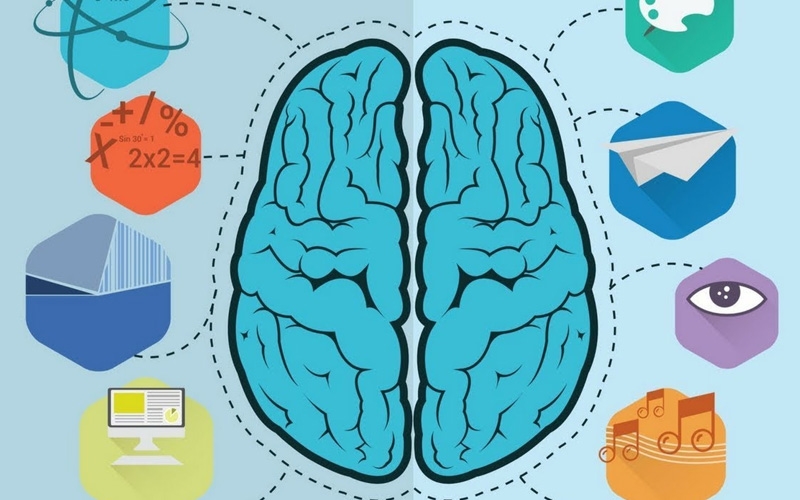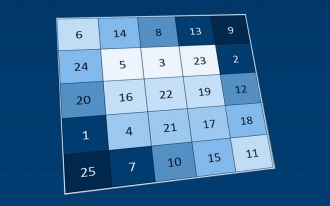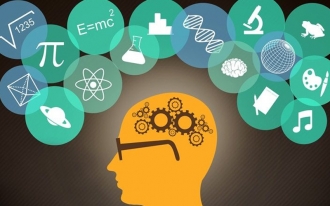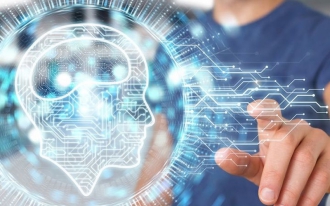- BRAINTRAIN |
- Blog |
- Memory |
- Memory by Content

Bogdan Moroz 19.10.2019 2016 Comments
Human memory is a complex process, the study of which became possible only through experimental methods and comparison with research on unconditioned and conditioned reflexes in animals. Depending on the evaluation criteria, there are several classifications of memory processes, all equally important for a comprehensive understanding of brain function and reflecting the broader picture of what occurs in the human mind.
To improve memory, one must first understand its mechanisms and identify which specific aspect needs targeted intervention. Comprehensive memory training is an abstract concept encompassing a range of impacts on various sensory systems in a specific sequence with predetermined intervals. This approach enables maximally effective memory training with rational use of time and effort.
By content, memory is categorized based on the type of information stored and the sensory system receiving the stimulus. Undoubtedly, analyzing situations and recalling necessary events involves information from multiple sources, but the processes of data acquisition, processing, and storage differ significantly.
Visual
As the name suggests, this type involves visual images received from visual receptors. Also known as iconic memory, it has a data transfer rate of about 10 million bits per second. The process seems simple at first glance: visual stimuli reach the sensitive areas of the eyes, information is sent to a preliminary processing center, and it is stored as a visual image. However, the key lies in the processing stage, which underpins the entire film industry. One property of visual memory is often utilized: superimposing an image over the previous one if the interval between them is shorter than the fading time of the prior frame in memory. This is called the backward masking effect, which in practice manifests as video at 24 frames per second. These frames overlap, creating a lifelike moving picture in human perception. Memory development based on visual images varies among individuals, and regular training can yield positive results.
Motor
In everyday language, it’s often called muscle memory. This is the process of encoding specific kinetic movements needed for particular actions. It develops while mastering a specific activity, such as playing a musical instrument, drawing, calligraphy, or similar tasks. Over time, a sequence of muscle movements becomes associated with a specific activity and is unconsciously reproduced with high precision. This is achieved through repeated practice, with training duration and reproduction accuracy depending on individual characteristics.
Echoic
Information for this memory comes from auditory organs, so it’s often referred to as auditory memory in literature. Beyond individual differences in perceiving these stimuli, auditory sensitivity changes with age, and the ability to distinguish certain frequencies varies across age groups. This category includes the encoding of environmental sounds and audio information without logical structure. However, alongside other central nervous system areas, these centers can be effectively engaged to enhance productivity with other information. For example, the article “How to Make Your Brain Work Efficiently” describes a method to boost thinking efficiency by stimulating other brain areas.
Taste
Like the previous type, this is narrowly focused and relies solely on taste perception receptors. It can contribute to forming a holistic image of an object or event alongside other perception types. After analysis and storage, the data can be used to recall a specific taste mentally and synthesize new combinations not previously experienced. This ability doesn’t develop on its own and requires consistent practice and training.
Olfactory
This relies solely on olfactory receptors, which detect minute particles in the air and analyze them based on familiar criteria and past experiences. These experiences of distinguishing smells are shaped by specialized olfactory centers. Combined with visual and auditory information, it can create more vivid memories and a sense of presence. It’s also used in specific techniques to activate brain activity and enhance cognitive processes.
Pain
Similar to tactile memory, its data source is pain receptors located not only on the body’s surface but throughout the organism. The centers analyze not only the factors causing pain but also its nature, duration, frequency, and intensity. In stressful situations, it can enhance the activity of other centers.
Eidetic
This is a complex type of information not derived from a single sensory receptor type. It forms a comprehensive image of something, combining smell, taste, tactile sensations, visual elements, and auditory components. This image is stored long-term and recalled as a single entity without breaking down into individual sensory components. Memory development of this type impacts multiple centers simultaneously, and conversely, training individual sensory centers can influence this type of data storage.
Emotional
This is a specific imprint in memory primarily conveying emotions and sensations tied to a particular event or object. In everyday language, someone with strong emotional memory is often called grudge-holding, as they retain negative emotions caused by an object for a long time.
Social
This is a complex process enabling the creation of images of a specific group of people frequently encountered in the central nervous system. These are comprehensive images composed of numerous characteristics of each individual, eliciting a specific perception of their personality upon mention. Studies suggest the number of such reliably retained images ranges from 100 to 230, depending on individual developmental traits, with 150 considered the average. Creating such images relies not only on personal interaction but also on surrounding opinions and information from others.
Spatial
This is what we call navigation in our world. It’s a powerful brain center capable of storing extensive spatial information about areas a person visits periodically. Depending on the area’s size and visit frequency, the mental detail level varies. Research indicates that memory forms images of varying complexity: route maps and overview maps.
Route Maps
These resemble a navigator, containing information about a starting point, endpoint, and key objects along the path from one place to another. Distance and route details are minimally perceived. Such images form in large spaces where memorizing all details is nearly impossible.
Overview Maps
These are detailed, large-scale images with information about object sizes, terrain characteristics, and distances. A good example is the image of one’s home, where a person knows exactly how to reach a specific spot and what lies along the way.
Depending on interaction frequency with an area, one image type can transition into another, gaining greater detail. Notably, forming detailed images starts with simple route maps and takes time.
Verbal-Logical
This is based on information amenable to logical analysis and grouping. Unlike auditory memory with unstructured information, this engages more brain centers and is far more effective. Not only can more logical information be memorized, but its storage is also longer-lasting. This is why associations help imbue information with logic, enhancing memorization efficiency.
Train your memory in all its forms, as it’s an inseparable, complex brain center. For maximum effectiveness, use specially designed comprehensive exercise systems (brain trainers), integrated into modern memory training tools.




